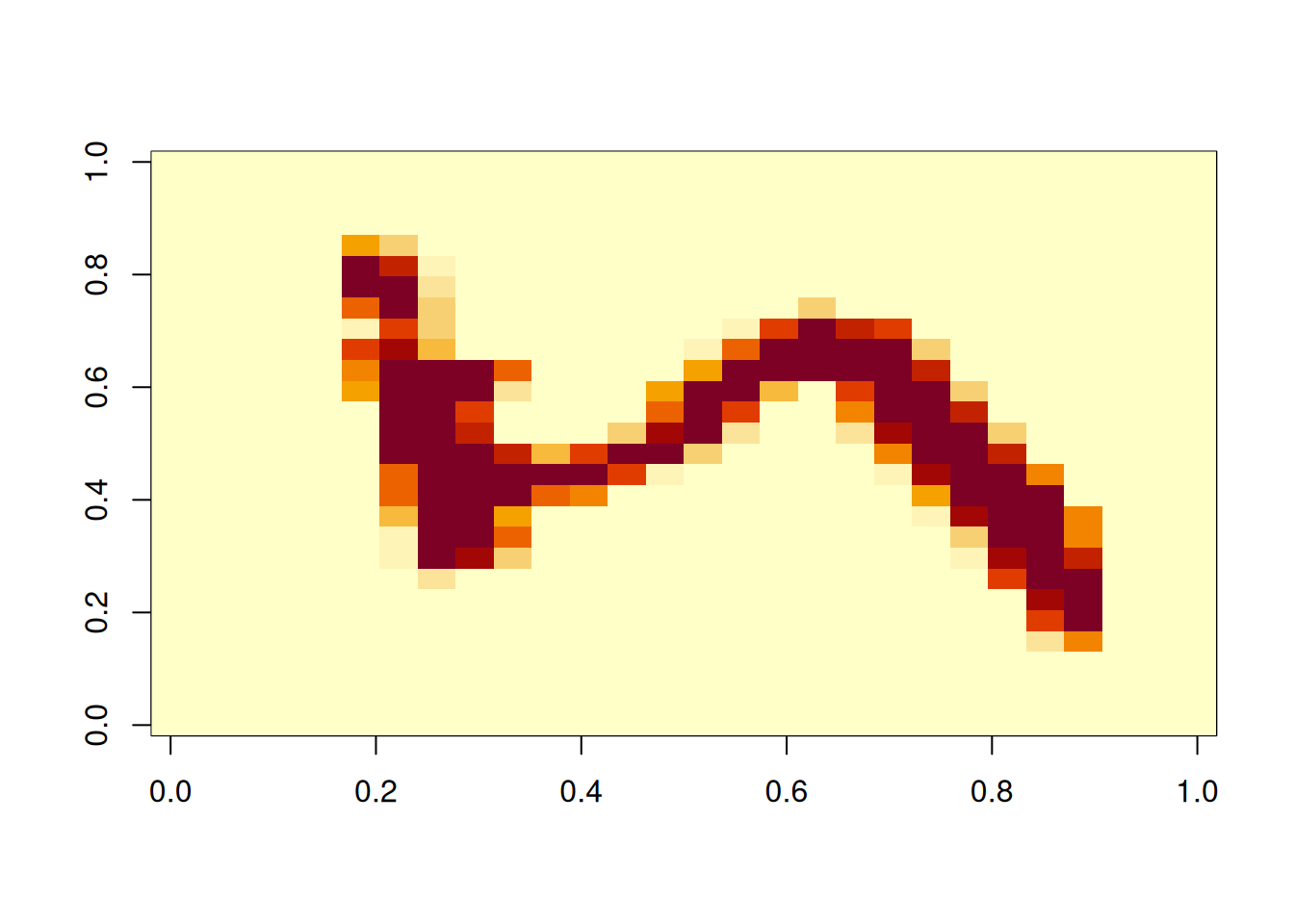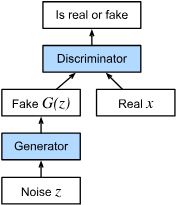Chapter 4 Deep Learning
- In recent years there has been a lot of hype about Deep Learning (DL)
- Deep Neural Networks are Neural Networks with many hidden layers
- Several heuristics are often used in DL:
- Dropout. Some connections are ignored during learning: regularization
- ReLU units: (avoid gradient vanishing)
- Transfer learning: use weights already trained with different datasets (and maybe fine-tune training with your database)
- DL includes some novel architectures
- Convolutional Neural Networks (CNN): images
- Long Short Term Memory (LSTM): time series
- Improvements outside Machine Learning theory
- Cloud environments such as Google Colab
- Hardware: GPUs
- Software packages: e.g. tensorflow (using keras as interface), H2O, fast.ai, torch, etc.
- Funding: Netflix, Google, Facebook…
4.1 Regression with deep Neural Networks
This is the task in Chapter 10.9 of An Introduction to Statistical Learning. The code is from the R torch version.
- First, data is not completely loaded into memory with a standard variable. Instead, a dataset is configured that will load data as it is needed.
library(torch)
library(luz) # high-level interface for torch
library(torchvision) # for datasets and image transformation
library(torchdatasets) # for datasets we are going to use
# library(zeallot)
# Load datasets
transform <- function(x) {
x %>%
torch_tensor() %>%
torch_flatten() %>%
torch_div(255)
}
train_ds <- mnist_dataset(
root = ".",
train = TRUE,
download = TRUE,
transform = transform
)## Dataset <mnist> (~12 MB) will be downloaded and processed if not
## already available.
## Dataset <mnist> loaded with 60000 images.## Dataset <mnist> (~12 MB) will be downloaded and processed if not
## already available.
## Dataset <mnist> loaded with 10000 images.## [1] 60000## [1] 10000
## [1] 5- Then, the NN is configured
modelnn <- nn_module(
initialize = function() {
self$linear1 <- nn_linear(in_features = 28*28, out_features = 256)
self$linear2 <- nn_linear(in_features = 256, out_features = 128)
self$linear3 <- nn_linear(in_features = 128, out_features = 10)
self$drop1 <- nn_dropout(p = 0.4)
self$drop2 <- nn_dropout(p = 0.3)
self$activation <- nn_relu()
},
forward = function(x) {
x %>%
self$linear1() %>%
self$activation() %>%
self$drop1() %>%
self$linear2() %>%
self$activation() %>%
self$drop2() %>%
self$linear3()
}
)
print(modelnn())## An `nn_module` containing 235,146 parameters.
##
## ── Modules ──────────────────────────────────────────────────────
## • linear1: <nn_linear> #200,960 parameters
## • linear2: <nn_linear> #32,896 parameters
## • linear3: <nn_linear> #1,290 parameters
## • drop1: <nn_dropout> #0 parameters
## • drop2: <nn_dropout> #0 parameters
## • activation: <nn_relu> #0 parameters# Configure optimizer
modelnn <- modelnn %>%
setup(
loss = nn_cross_entropy_loss(),
optimizer = optim_rmsprop,
metrics = list(luz_metric_accuracy())
)- Once everything is prepared, the fitting process of the NN is really executed
system.time(
fitted <- modelnn %>%
fit(
data = train_ds,
epochs = 1, #15,
valid_data = 0.2,
dataloader_options = list(batch_size = 256),
verbose = TRUE
)
)
plot(fitted)- Finally, accuracy can be assessed
accuracy <- function(pred, truth) {
mean(pred == truth) }
# gets the true classes from all observations in test_ds.
truth <- sapply(seq_along(test_ds), function(x) test_ds[x][[2]])
fitted %>%
predict(test_ds) %>%
torch_argmax(dim = 2) %>% # the predicted class is the one with higher 'logit'.
as_array() %>% # we convert to an R object
accuracy(truth)4.2 Generative Networks
- Generative Models produce new data with the same underlying probability distribution of observed data
- Generative Models are Unsupervised Learning techniques
- Generative Adversarial Networks use Supervised Learning (regression and classification) to build an unsupervised generative model

(Figure by Zhang, Aston and Lipton, Zachary C. and Li, Mu and Smola, Alexander J. - https://github.com/d2l-ai/d2l-en, CC BY-SA 4.0, https://commons.wikimedia.org/w/index.php?curid=152265649)
This code is from RGAN
library(torch)
library(RGAN)
# Sample some toy data to play with.
data <- sample_toydata()
# Transform (here standardize) the data to facilitate learning.
# First, create a new data transformer.
transformer <- data_transformer$new()
# Fit the transformer to your data.
transformer$fit(data)
# Use the fitted transformer to transform your data.
transformed_data <- transformer$transform(data)
# Have a look at the transformed data.
par(mfrow = c(3, 2))
# Margins!!
par(mar=c(1,1,1,1))
plot(
transformed_data,
bty = "n",
col = viridis::viridis(2, alpha = 0.7)[1],
pch = 19,
xlab = "Var 1",
ylab = "Var 2",
main = "The Real Data",
las = 1
)
# No cuda device!!
device <- "cpu"
# Now train the GAN and observe some intermediate results.
res <-
gan_trainer(
transformed_data,
eval_dropout = TRUE,
plot_progress = TRUE,
plot_interval = 600,
device = device
)